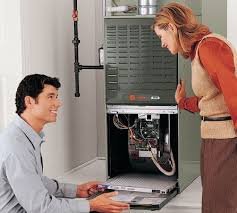How to Replace a Furnace on your Own
How To Replace a Furnace On Your Own

furnace repair in edmonton
During winter, learn how to replace a furnace on your own once it breaks down to save time and money without suffering in the cold.
If you live somewhere cold, the warm summer heat is a welcome respite from the biting cold you constantly experience during the long, frigid winter months. Even if winter is still months away from now, it pays to learn how to choose the best furnace, so you don’t panic in case it happens in the middle of winter, and the last thing you want is to stay cocooned at home in the cold. As early as now, try to find out what’s involved in a furnace replacement and what your alternatives are if ever the need arises.
Why is a furnace replacement important?
Most of the time, furnace replacement is a necessity rather than optional. A furnace can only live so long. Once it reaches it maximum lifespan, it will eventually have to retire. Also, it costs more to operate an older system, not to mention the frequent and costly furnace repairs just to keep it going. The sad thing is that it may also be doing a poor job of heating your home.
Factors to Consider When Evaluating Your Furnace’s Condition and Performance
Age: The age of your furnace is crucial. Units over 15 years old likely need replacement. However, regular maintenance can extend their life by a few years. Remember, age isn’t everything—well-maintained units take longer to show signs of trouble.
Deteriorating Reliability: Frequent repairs are a bad sign for any furnace. If breakdowns are common, it’s time to decide if constant repairs are worth it or if replacing the furnace is a better investment. Frequent issues indicate a furnace nearing the end of its lifespan.
Inconsistent Heating: A furnace should provide consistent and reliable heating. If you notice varying temperatures from room to room, the furnace might be failing to meet your thermostat settings.
Decreasing Heating Efficiency: An inefficient furnace costs more to operate because it uses more fuel to produce the same amount of heat. If your utility bills rise without an increase in usage, your furnace may struggle to meet your heating needs. Replacing it can lead to savings and better efficiency.
Burner’s Flame Colour Changes: This applies to furnaces using propane or natural gas. The flame should be blue, indicating good combustion. A yellow flame might signal a carbon monoxide leak, which is dangerous. Contact a technician immediately and replace the furnace if needed.
Strange Sounds: A furnace should operate quietly, with most noise coming from the air handler. If you hear unusual sounds, contact a technician. Often, it’s a minor issue like a loose bearing, not requiring replacement.
Furnace Efficiency
Aside from the factors mentioned above, furnace replacement can let you enjoy all the perks offered by a modern and energy efficient system. If you want to know how to replace a furnace, consider furnace efficiency in looking for one. The Annual Fuel Utilization Efficiency (AFUE) rating can be seen on the accompanying EnergyGuide card or written in the owner’s manual. The AFUE rating measures a furnace’s efficiency, specifically the amount of energy or fuel it converts into heat that is then distributed to your home. For instance, gas furnaces with a 90% AFUE rating convert 90 cents into usable heat for every dollar spent on energy. The remaining 10% is lost through the ductwork.
Expect greater efficiency from furnaces with higher AFUE ratings. These furnaces can burn fuel better and cost less to operate as well. Even if the initial upfront cost is a bit higher than ordinary furnaces, the amount of money you can save on lower utility cost each month pretty much has it covered.
Furnace Types
- Natural Gas – quite common and a popular choice, and also boasts of high-efficiency ratings. Apply for a gas connection to supply you with fuel from your local utility company.
- Propane, Oil, or Other Fossil Fuel – provided in bulk by a local supplier, you have to spend a bigger one-time payment than be charged monthly by a utility company for your entire monthly consumption.
- Electricity – very efficient and generates high-quality home heating.
- Heat Pumps – used for both home heating and cooling, moves heat from one part of the house through a duct system that is full of refrigerant. It is capable of pulling the heat out of the cold outdoor air that is then circulated inside your house. A heat pump is highly efficient and excellent at regulating your home’s indoor temperature.
Replacement Furnace Sizing
Your new furnace should be the right size to supply the heat requirements of your home. Before choosing a particular unit, hire a heating contractor to do a load calculation. The expert will evaluate your home’s level of insulation, the number of doors and windows, and the number of household members, among others to be able to determine your home’s unique heating requirements.
After knowing your heating load, that’s when you can start choosing the type of furnace you want to have at home. Keep in mind that once you learn how to replace a furnace, the major considerations you need to bear in mind is efficiency without spending more money or using larger amounts of energy.
